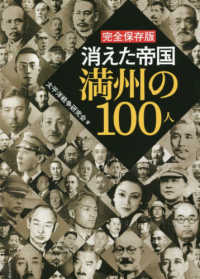Description
Reference to or quotation from someone's speech, thoughts, or writing is a key component of narrative. These reports further a narrative, make it more interesting, natural, and vivid, ask the reader to engage with it, and reflect historical cultural understandings of modes of discourse presentation. To a large extent, the way we perceive a story depends on the ways it presents discourse, and along with it, speech, writing, and thought.In this book, Beatrix Busse investigates speech, writing, and thought presentation in a corpus of 19th-century narrative fiction including Frankenstein, Jane Eyre, Wuthering Heights, Oliver Twist, and many others. At the intersection between corpus linguistics and stylistics, this book develops a new corpus-stylistic approach for systematically analyzing the different narrative strategies of discourse presentation in key pieces of 19th-century narrative fiction. Speech, Writing, and Thought Presentation in 19th-Century Narrative Fiction identifies diachronic patterns as well as unique authorial styles, and places them within their cultural-historical context. It also suggests ways for automatically identifying forms of discourse presentation, and shows that the presentation of characters' minds reflects an ideological as well as an epistemological concern about what cannot be reported, portrayed, or narrated. Through insightful interdisciplinary analysis, Busse demonstrates that discourse presentation fulfills the function of prospection and encapsulation, marks narrative progression, and shapes readers' expectations.
Table of Contents
List of AbbreviationsList of Tables and FiguresAcknowledgementsChapter 1: Introduction 1.1 This Study and Its Aims1.2 My Version of English Historical LinguisticsChapter 2: The Discourse Presentation Model So Far 2.1 Presentation of Voices: Leech and Short's (1981/2007) and Semino and Short's (2004) Models of Speech, Writing, and Thought Presentation2.2 The Notion of Faithfulness to an Anterior Discourse in Narrative Fiction2.3 "State-of-the-Art" Research on Speech, Writing, and Thought Presentation in 19th-Century English2.4 Additional Linguistic Frameworks and Models Necessary to the Analysis of Discourse Presentation in 19th-Century Narrative Fiction2.5 Wrap up and What is NextChapter 3: Methodology 3.1 The Corpus and Its Scope3.2 The Annotation Scheme3.3 The Annotation Procedure3.4 Methodological CaveatsChapter 4: Types, Distribution, and Lexico-Grammatical Realization of Discourse Presentation Categories and Their Functional Implications 4.1 General Quantitative Observations4.2 The Different Categories of the Modes of Discourse Presentation: Quantification of Tags and Number of Words by Which These Are RepresentedChapter 5: Scales and Modes of Discourse Presentation and their Functions 5.1 A Note on Subjectivity5.2 The Categories of Discourse Presentation5.3. Subcategories of Speech, Writing, and Thought Presentation5.4 Summary Discourse Presentation in 19th-Century Narrative Fiction - Further ReflectionsChapter 6: Towards Developing a Procedure for Automatically Identifying Speech, Writing, and Thought Presentation 6.1 Preliminaries6.2 The ProcedureChapter 7: Narrative Progression and Characterization: The Functional Interplay between Narration and Discourse Presentation 7.1. Reporting Strategies of NRS, NRT, and NRW and Discourse Presentation7.2 Paralinguistic Narration7.3 Imagination and Observation: Thought Presentation and Visual Narration in19th-Century Narrative FictionChapter 8: Conclusion Endnotes BibliographyIndex





